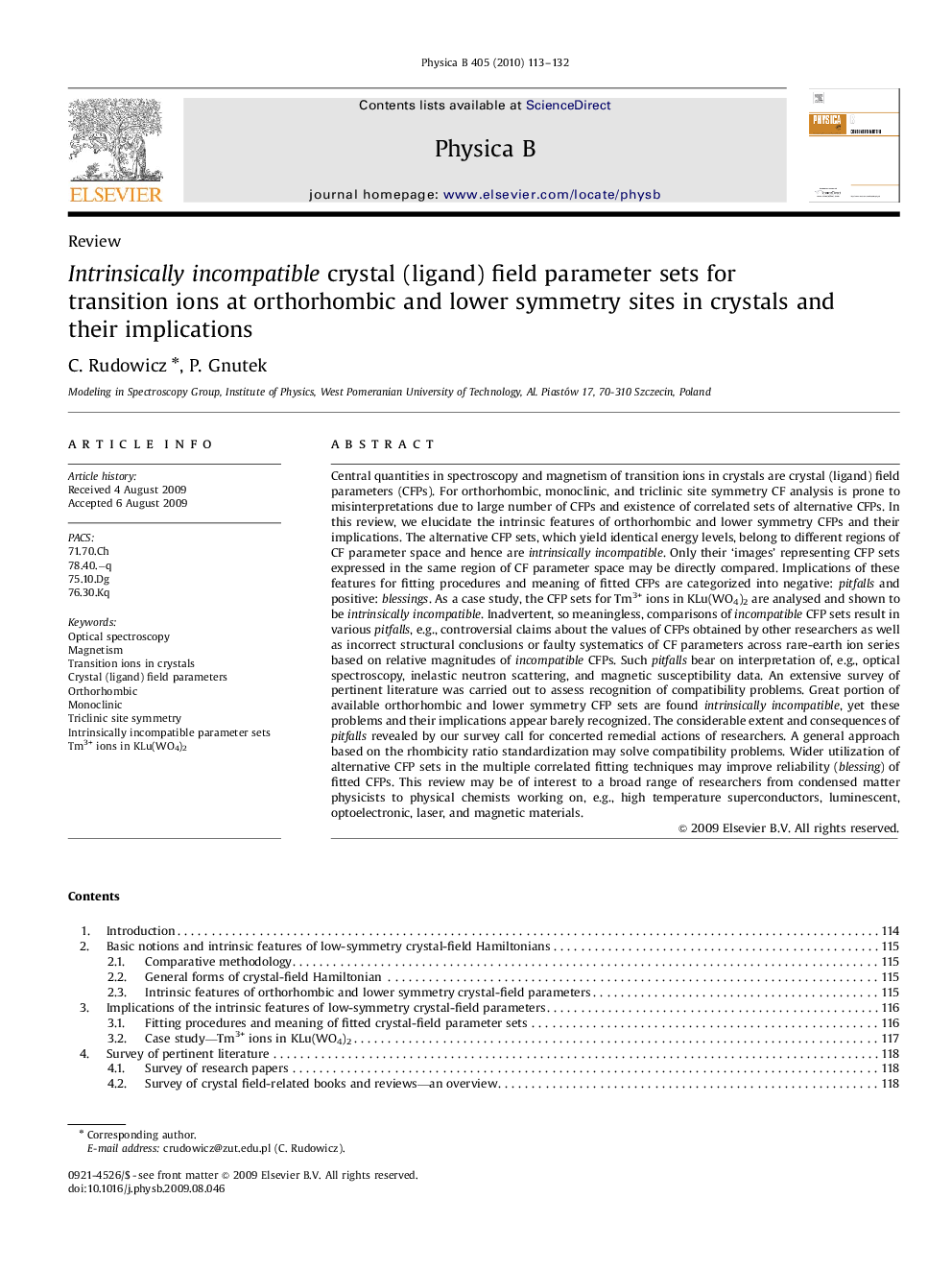| Article ID | Journal | Published Year | Pages | File Type |
|---|---|---|---|---|
| 1813745 | Physica B: Condensed Matter | 2010 | 20 Pages |
Central quantities in spectroscopy and magnetism of transition ions in crystals are crystal (ligand) field parameters (CFPs). For orthorhombic, monoclinic, and triclinic site symmetry CF analysis is prone to misinterpretations due to large number of CFPs and existence of correlated sets of alternative CFPs. In this review, we elucidate the intrinsic features of orthorhombic and lower symmetry CFPs and their implications. The alternative CFP sets, which yield identical energy levels, belong to different regions of CF parameter space and hence are intrinsically incompatible. Only their ‘images’ representing CFP sets expressed in the same region of CF parameter space may be directly compared. Implications of these features for fitting procedures and meaning of fitted CFPs are categorized into negative: pitfalls and positive: blessings. As a case study, the CFP sets for Tm3+ ions in KLu(WO4)2 are analysed and shown to be intrinsically incompatible. Inadvertent, so meaningless, comparisons of incompatible CFP sets result in various pitfalls, e.g., controversial claims about the values of CFPs obtained by other researchers as well as incorrect structural conclusions or faulty systematics of CF parameters across rare-earth ion series based on relative magnitudes of incompatible CFPs. Such pitfalls bear on interpretation of, e.g., optical spectroscopy, inelastic neutron scattering, and magnetic susceptibility data. An extensive survey of pertinent literature was carried out to assess recognition of compatibility problems. Great portion of available orthorhombic and lower symmetry CFP sets are found intrinsically incompatible, yet these problems and their implications appear barely recognized. The considerable extent and consequences of pitfalls revealed by our survey call for concerted remedial actions of researchers. A general approach based on the rhombicity ratio standardization may solve compatibility problems. Wider utilization of alternative CFP sets in the multiple correlated fitting techniques may improve reliability (blessing) of fitted CFPs. This review may be of interest to a broad range of researchers from condensed matter physicists to physical chemists working on, e.g., high temperature superconductors, luminescent, optoelectronic, laser, and magnetic materials.
